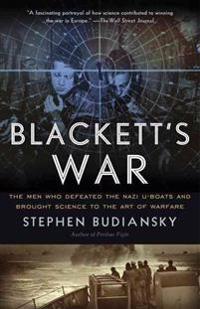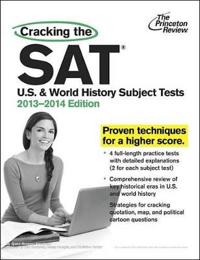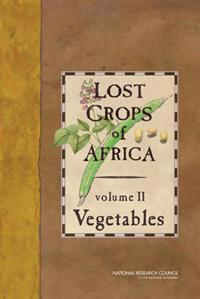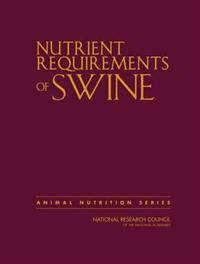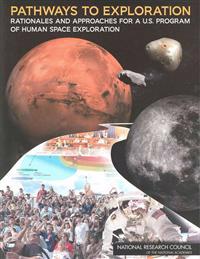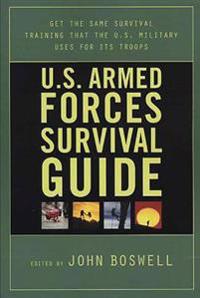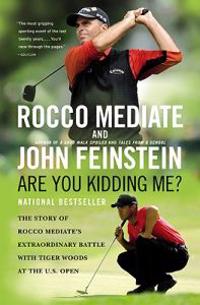A Wicked War: Polk, Clay, Lincoln, and the 1846 U.S. Invasion of Mexico (Häftad)
avAmy S. Greenberg
ISBN: 9780307475992 - UTGIVEN: 2013-08Often forgotten and overlooked, the U.S.-Mexican War featured false starts, atrocities, and daring back-channel negotiations as it divided the nation, paved the way for the Civil War a generation later, and launched the career of Abraham Lincoln. Amy S. Greenberg's skilled storytelling and rigorous [...]
Blackett's War: The Men Who Defeated the Nazi U-Boats and Brought Science to the Art of Warfare (Inbunden)
avStephen Budiansky
ISBN: 9780307595966 - UTGIVEN: 201302The exciting history of a small group of British and American scientists who, during World War II, developed the new field of operational research to turn back the tide of German submarines--revolutionizing the way wars are waged and won.
In March 1941, after a year of unbroken and devastating [...]Blackett's War: The Men Who Defeated the Nazi U-Boats and Brought Science to the Art of Warfare (Häftad)
avStephen Budiansky
ISBN: 9780307743633 - UTGIVEN: 2013-11A "Washington Post" Notable Book
In March 1941, after a year of devastating U-boat attacks, the British War Cabinet turned to an intensely private, bohemian physicist named Patrick Blackett to turn the tide of the naval campaign. Though he is little remembered today, Blackett did as much as anyo[...]Dark Pools: The Rise of the Machine Traders and the Rigging of the U.S. Stock Market (Häftad)
ISBN: 9780307887184 - UTGIVEN: 2013-06Cracking the SAT U.S. and World History Subject Tests (Häftad)
avGrace Roegner Freedman, Dan Komarek, Casey Paragin
ISBN: 9780307945587 - UTGIVEN: 201303If you need to know it, it's in this book. The 2013-2014 edition of "Cracking the SAT U.S. & World History Subject Tests "includes:
- 4 full-length practice tests with detailed explanations (2 for each subject test)
- Comprehensive reviews of key historical eras in U.S. and world history
-[...]Valuing Ecosystem Services (Pocket)
avNational Research Council (U. S.)
ISBN: 9780309093187 - UTGIVEN: 2005-06Nutrient recycling, habitat for plants and animals, flood control, and water supply are among the many beneficial services provided by aquatic ecosystems. In making decisions about human activities, such as draining a wetland for a housing development, it is essential to consider both the value of t[...]
Food Marketing to Children And Youth (Inbunden)
avInstitute of Medicine (U. S.), J. Michael McGinnis, Jennifer Appleton Gootman
ISBN: 9780309097130 - UTGIVEN: 2006-04Creating an environment in which children in the United States grow up healthy should be a high priority for the nation. Yet the prevailing pattern of food and beverage marketing to children in America represents, at best, a missed opportunity, and at worst, a direct threat to the health prospects o[...]
Lost Crops of Africa (Pocket)
avNational Research Council (U. S.)
ISBN: 9780309103336 - UTGIVEN: 2006-12This report is the second in a series of three evaluating underexploited African plant resources that could help broaden and secure Africa's food supply. The volume describes the characteristics of 18 little-known indigenous African vegetables (including tubers and legumes) that have potential as fo[...]
Lost Crops of Africa (Pocket)
avNational Research Council (U. S.)
ISBN: 9780309105965 - UTGIVEN: 2008-02This book is the third in a series evaluating underexploited African plant resources that could help broaden and secure Africa's food supply. The volume describes 24 little-known indigenous African cultivated and wild fruits that have potential as food and cash-crops but are typically overlooked by [...]
Recognition and Alleviation of Pain in Laboratory Animals (Pocket)
avNational Research Council (U. S.)
ISBN: 9780309128346 - UTGIVEN: 2009-12The use of animals in research adheres to scientific and ethical principles that promote humane care and practice. Scientific advances in our understanding of animal physiology and behavior often require theories to be revised and standards of practice to be updated to improve laboratory animal welf[...]
Keeping Patients Safe (Pocket)
avInstitute of Medicine (U. S.) Committee (COR)
ISBN: 9780309187367 - UTGIVEN: 2004-03Building on the revolutionary Institute of Medicine reports To Err is Human and Crossing the Quality Chasm, Keeping Patients Safe lays out guidelines for improving patient safety by changing nurses' working conditions and demands. Licensed nurses and unlicensed nursing assistants are critical partic[...]
Nutrient Requirements of Swine (Inbunden)
avNational Research Council (U. S.)
ISBN: 9780309224239 - UTGIVEN: 2012-06Since 1944, the National Research Council has published 10 editions of the Nutrient Requirements of Swine. This reference has guided nutritionists and other professionals in academia and the swine and feed industries in developing and implementing nutritional and feeding programs for swine. The swin[...]
Corps of Engineers Water Resources Infrastructure (Häftad)
avEngineer Committee on U.S. Army Corps of Engineers Water Resources Science, Water Science and Technology Board, Division on Earth and Life Studies
ISBN: 9780309264761 - UTGIVEN: 2013-09Over the past century, the U.S. Army Corps of Engineers has built a vast network of water management infrastructure that includes approximately 700 dams, 14,000 miles of levees, 12,000 miles of river navigation channels and control structures, harbors and ports, and other facilities. Historically, t[...]
Future U.S. Workforce for Geospatial Intelligence (Häftad)
ISBN: 9780309268646 - UTGIVEN: 2013-03We live in a changing world with multiple and evolving threats to national security, including terrorism, asymmetrical warfare (conflicts between agents with different military powers or tactics), and social unrest. Visually depicting and assessing these threats using imagery and other geographicall[...]
Review of the Federal Ocean Acidification Research and Monitoring Plan (Pocket)
avNational Research Council (U. S.)
ISBN: 9780309301527 - UTGIVEN: 2013-07-30Pathways to Exploration (Pocket)
avNational Research Council (U. S.)
ISBN: 9780309305075 - UTGIVEN: 2014-12The United States has publicly funded its human spaceflight program on a continuous basis for more than a half-century, through three wars and a half-dozen recessions, from the early Mercury and Gemini suborbital and Earth orbital missions, to the lunar landings, and thence to the first reusable win[...]
U.S. Armed Forces Survival Guide (häftad)
ISBN: 9780312331221 - UTGIVEN: 2004-08Get the same survival training that the U.S. military uses for its troops."The U.S. Armed Forces Survival Guide" is the only source hikers, campers, explorers or families focused on emergency preparedness will ever need."The U.S. Armed Forces Survial Guide" covers everything a modern outdoorsperson [...]
Bitter Friends, Bosom Enemies: Iran, the U.S., and the Twisted Path to Confrontation (Häftad)
avBarbara Slavin
ISBN: 9780312384913 - UTGIVEN: 2009-01In "Bitter Friends, Bosom Enemies," Barbara Slavin untangles the love-hate relationship between Iran and the United States that has brought the two countries to the brink of war. Slavin reveals that relations between Washington and Tehran have been riddled with contradictions for decades and details[...]
Construction Workers, U.S.A (Inbunden)
avHerbert Applebaum
ISBN: 9780313309373 - UTGIVEN: 1999-10A lively, personalized account incorporating objective analysis and solid information accumulated over 42 years, this book presents a graphic picture of the construction industry from an insider's point of view. The volume focuses on the culture of construction workers, the management style of contr[...]
Are You Kidding Me?: The Story of Rocco Mediate's Extraordinary Battle with Tiger Woods at the U.S. Open (häftad)
ISBN: 9780316049115 - UTGIVEN: 2010-05The U.S. Open in June 2008 produced one of the most unexpected, dramatic, and memorable showdowns in golf history. Day after day, Rocco Mediate, a respected journeyman whose career had been dogged by injuries pushed the seemingly invincible Tiger Woods to his physical and mental limits. Not even Med[...]
Sew U Home Stretch (Inbunden)
avWendy Mullin, Eviana Hartman
ISBN: 9780316118378 - UTGIVEN: 200808A follow-up to Sew U shares recommendations for revitalizing soft-knit fabric wardrobe pieces with creative accents, providing step-by-step instructions for making custom clothes, in a guide complemented by three complete Simplicity patterns.[...]
Hellfire Boys: The Birth of the U.S. Chemical Warfare Service and the Race for the World's Deadliest Weapons
ISBN: 9780316264105 - UTGIVEN: 2017-11An explosive look into the dawn of chemical warfare during World War I
"A terrifying piece of history that almost no one knows." - Hampton Sides In 1915, when German forces executed the first successful gas attack of World War I, the world watched in horror as the boundaries of warfare were for[...]



